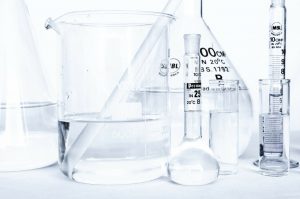 Single-use processing systems have been designed for one-time use and have become a leading paradigm for use in the pre-commercial manufacturing process of biopharmaceutical products. Single-use has a convenient plug-and-play nature along with a growing inclination to use high-end polymer materials likely are contributing to the success of a number of companies manufacturing single-use bioprocessing systems. The continued expansion of the single-use bioprocessing market has also been boosted by less floor space needed, cost-effectiveness, and a low risk for product cross-contamination.
Single-use processing systems have been designed for one-time use and have become a leading paradigm for use in the pre-commercial manufacturing process of biopharmaceutical products. Single-use has a convenient plug-and-play nature along with a growing inclination to use high-end polymer materials likely are contributing to the success of a number of companies manufacturing single-use bioprocessing systems. The continued expansion of the single-use bioprocessing market has also been boosted by less floor space needed, cost-effectiveness, and a low risk for product cross-contamination.
The increased demand from the pharmaceutical industry for single-use bioprocessing materials, the limited number of possible products within the pipeline, and patent expiration for blockbuster molecules have forced certain companies to choose single-use bioprocessing technologies, as such used at Fleet Bioprocessing. Traction of the technologies have a number of reasons behind them, and include:
Cost reduction: one of the benefits offered by single-use bioprocessing systems is cost reductions that are associated with the cleaning, maintenance, and sterilisation of steel-based bioreactor systems. That is key and helps to explain the rapid growth and expansion taking place within the single-use bioprocessing market since there are reduced R&D and initial investment costs that are required for the manufacturing process.
Productivity boost: deploying a single-use bioprocessing process helps to increase productivity due to the manufacturing costs and complexity of automation being reduced since it eliminates the need for sterilisation. Full-scale manufacturing is also allowed since the cost of chemicals and water is reduced for single-use systems when compared with traditional stainless-steel hardware systems that have been used in the past.
Time-saving: due to the design of single-use bioprocessing systems, floor space is saved and faster manufacturing is possible. That reduces the amount of time that staff has to spend on set-up, preparation, documentation, and validation. Single-use bioreactors offer flexibility as well, which has initiated the trend of multiple-drug facilities being able to fulfil the demands of production of various drugs under one roof.
Ease of disposal: the main difference between conventional products and single-use bioprocessing products related to disposing of single-use bioreactors that are easy to clean, simple, and safe. Also, they nearly completely eliminate the potential of batch-to-batch contamination via cross-contamination when compared with stainless steel reactors. Since the systems are disposable, they do not require a conventional sanitisation process any longer, and it is easy to dispose of the materials that are used during the manufacturing process after they are used.
Less energy and water consumption: when a single-use bioprocessing system is adopted it reduces the consumption of water and energy and therefore demand. Since bioprocess systems have been designed to be disposable, less water and energy re needed for cleaning manufacturing equipment.
Minimal risk of cross-contamination: bio-manufacturers have two major concerns which are high costs for purchasing bioprocessing pharmaceutical components and cross-contamination. Both of those issues can be solved by single-use bioprocessing systems. There are three kinds of contamination that take place throughout the bioprocessing of pharmaceutical products: biologic contamination, microbial contamination, and cross-contamination. Unwanted contamination can lessen production yields by purification steps needing to be increased. With single-use bioprocessing, the flow path of the product is totally discarded and after each batch is replaced to reduce cross-contamination risk.